Axolotl Regrow Limbs: axolotl limb regeneration
Axolotl Regrow Limbs: A Fascinating Look at How These Creatures Heal Naturally
Axolotl Regrow Limbs: Have you ever wondered why some animals can regrow limbs while others can’t? Axolotls are a perfect example of this amazing ability. These creatures live in the calm waters of Xochimilco and can grow back lost limbs. Let’s dive into how they do it and what it means for us.
Exploring axolotl limb regeneration could lead to big breakthroughs in human medicine. This journey is just starting, and it’s full of possibilities.
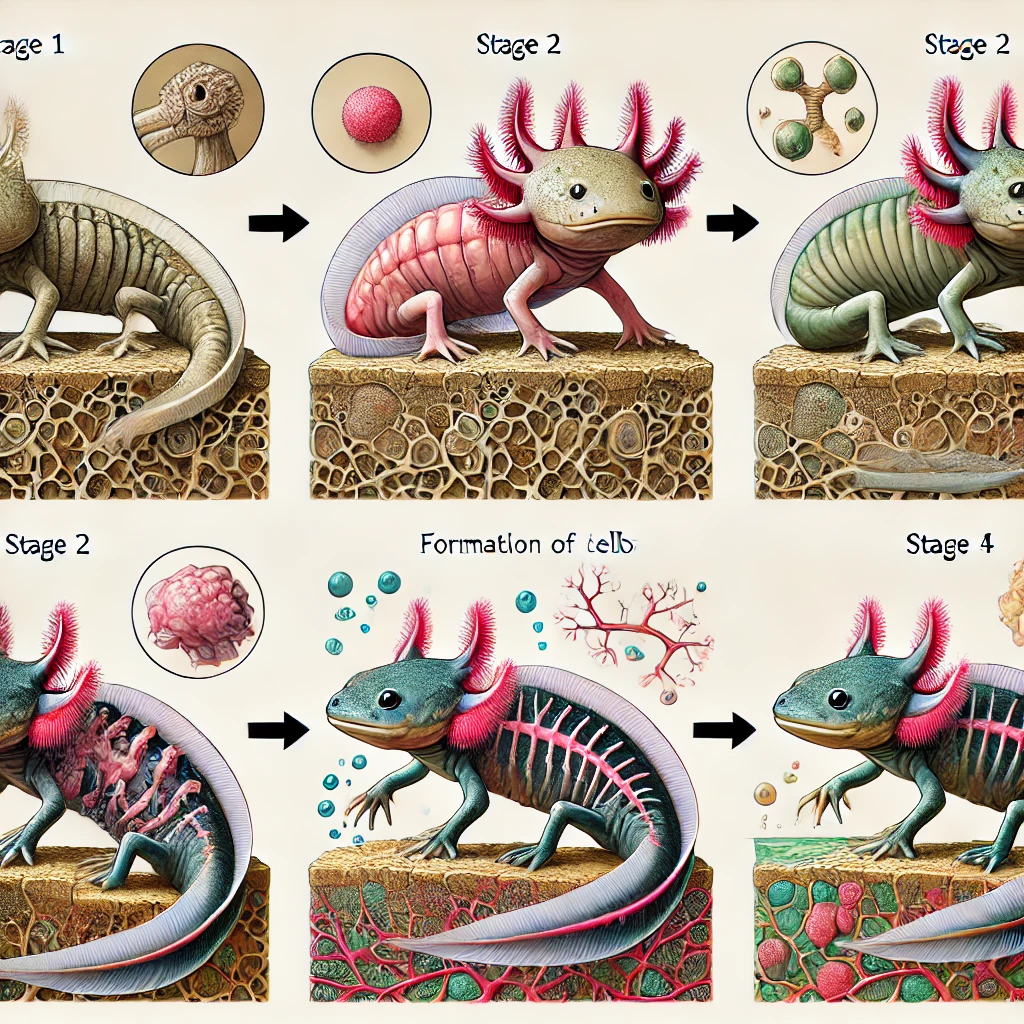
Key Takeaways
- Axolotls are known for their extraordinary ability to regrow limbs.
- Their regenerative abilities challenge our understanding of biological limitations.
- Research into axolotl limb regeneration may have implications for human medicine.
- Understanding the axolotl’s unique biology is key to unlocking regenerative secrets.
- These creatures are a vital part of ongoing scientific studies in regeneration.
Introduction to Axolotls
The axolotl is a fascinating aquatic salamander with unique traits. It is formally known as Ambystoma mexicanum. This amphibian has external gills, a wide head, and can regrow limbs and spinal cord tissues.
I find the axolotl habitat very interesting. They are native to Mexico’s lakes and canals, especially Xochimilco. But, urban development has harmed their homes. Conservation is key for their survival.
Axolotls’ adaptations show the amazing possibilities in regenerative medicine. Their biology and aquatic lifestyle inspire research into their regenerative powers.
Understanding Limb Regeneration
Limb regeneration is a fascinating area of study. It shows how some animals, like axolotls, can grow back lost limbs easily. This process involves complex steps that start when an injury happens. Learning about these steps could help us understand how some creatures can heal themselves.
Stem cells are key in limb regeneration. When an axolotl loses a limb, special cells move to the injury site. These cells can change into different types needed for healing. Research shows how these cells work together to form a blastema, which is crucial for growing back a limb.
Other factors also play a role in limb regeneration. Signals from the body and changes in the environment help restore lost limbs. Things like membrane receptors, signaling molecules, and growth factors work together. They create a space where complex structures can be rebuilt.
Research on regeneration is also leading to new ideas in medicine. Scientists are studying animals with great healing powers. They hope to find ways to help humans recover from injuries and diseases.
Axolotl Regrow Limbs: How It Works
Learning how axolotls regrow limbs is fascinating. They can grow back limbs, hearts, and even parts of the brain. This is a big topic for scientists to study. We’ll look at the biological steps in the axolotl’s limb regrowth, focusing on the roles of different cells.
The Axolotl Regrow Limbs Process
The process starts with an injury. When an axolotl loses a limb, a wound epidermis forms first. This epidermis is key for starting the healing and growth.
Next, a special structure called the blastema forms. It’s a group of cells that can become different types needed for a new limb. Knowing how axolotls regrow limbs helps us understand cell behavior and regeneration.
Axolotl Regrow Limbs ou axolotl limb regeneration
Key Mechanisms Behind Regeneration
Several important mechanisms help axolotls regrow limbs. Growth factors are crucial for cell communication. They help the healing process in ways other animals don’t.
Another key factor is the activation of specific genes. These genes are dormant in other animals but active in axolotls. This helps us understand their regenerative abilities and how it could help humans.
| Mechanism | Description | Significance |
|---|---|---|
| Wound Epidermis | Forms a protective barrier over the injury | Signals cells to migrate and initiate healing |
| Blastema Formation | Cluster of undifferentiated cells at the wound site | Acts as the precursor for new limb structures |
| Growth Factors | Proteins that mediate cell communication | Facilitate the regulation of regeneration pathways |
| Gene Activation | Governs the expression of regenerative capabilities | Allows axolotls to regenerate limbs unlike other species |
Axolotl Limb Regrowth Stages
The axolotl has amazing abilities in its regeneration process. This process happens in several stages, showing a complex biological system. Knowing about the axolotl’s limb regrowth stages helps us understand how it can restore its limbs.
Initial Wound Healing
When an axolotl loses a limb, it quickly starts healing the wound. Blood vessels close and platelets clump together to form a clot. Cells move to the injury, creating a scab that protects the area and sends signals for healing.
Blastema Formation
After healing, the blastema stage begins. A group of cells, called the blastema, forms at the wound. These cells can become many different types, which is key for growing a new limb. This shows how the axolotl can change cells for healing.
Full Limb Development
The last stage is when the new limb fully develops. The blastema cells start to take shape, forming muscle, bone, and skin. Growth factors and signals guide this process, making sure the new limb works well. This shows the amazing ability of the axolotl to regrow its limbs.
| Regrowth Stage | Description | Key Features |
|---|---|---|
| Initial Wound Healing | Formation of a protective barrier and clot at the injury site. | Rapid cell migration, scab formation. |
| Blastema Formation | Development of multipotent cells at the wound site. | Cell dedifferentiation, tissue regeneration initiation. |
| Full Limb Development | Reconstruction of the limb through cell differentiation. | Muscle, bone, and skin formation. |
The Science of Regenerative Abilities
The axolotl’s amazing ability to regrow limbs has caught the eye of scientists. They are learning a lot about its axolotl regenerative abilities. The process involves complex genes and signals that help it heal.
Researchers are studying how axolotls can regrow not just limbs but also heart and brain tissues. They believe special genes are at work. These genes turn on when the axolotl gets hurt, helping it to heal and grow back its limbs.
Studies on axolotl limb regeneration have focused on molecular signals. They’ve found that certain growth factors are key. These factors help the axolotl’s stem cells work right, allowing it to replace lost limbs.
To show what’s important in this process, I’ve made a table. It lists the main signaling pathways in axolotl limb regeneration:
| Pathway | Description | Function in Regeneration |
|---|---|---|
| Wnt Signaling | A pathway that regulates cell growth and differentiation. | Promotes stem cell proliferation and limb patterning. |
| FGF Signaling | Involves fibroblast growth factors crucial in various cellular processes. | Stimulates limb bud growth and tissue regeneration. |
| TGF-β Signaling | A pathway associated with cellular responses to injury. | Modulates inflammation and promotes wound healing. |
Research is still going strong, and we’re learning more about the axolotl’s regenerative powers. This field could teach us a lot about how to heal ourselves better.
Comparing Axolotls and Other Salamanders
When I look into the regenerative powers of salamanders, I’m amazed by axolotls. They can grow back limbs, just like other salamanders. But, how they do it and how well they do it is different. This makes me wonder why some salamanders can regrow limbs better than others.
Regeneration in Different Species
Regeneration in salamanders is quite varied. Some can grow back limbs quickly and fully. Others can, but it takes longer or isn’t as complete. Here’s a look at a few examples:
| Salamander Species | Regeneration Capability | Time to Regrowth |
|---|---|---|
| Axolotl | Full limb regeneration | Up to 90 days |
| Mexican Salamander | Limited limb regeneration | 120-180 days |
| Eastern Red-backed Salamander | Reduced limb regeneration | Not fully regrown |
Unique Features of Axolotls
Axolotls have special traits that help them regrow limbs so well. They stay young-looking their whole lives, a rare ability called neoteny. This lets them regrow limbs with great detail. They can even fix their nervous system, making them very interesting to scientists studying regrowth.
Axolotl Limb Repair Mechanism
The axolotl’s limb repair is both efficient and complex. After losing a limb, the healing starts with a series of steps. These steps involve cells and molecules working together.
At the start, a wound epidermis forms over the cut. This layer is key as it releases signals to help the tissue grow back. It acts like a shield, protecting the area.
The immune system also plays a big role in healing. Unlike humans, axolotls have an immune system that helps them heal without scarring. This is thanks to special cells that aid in tissue growth.
Another important part is the blastema. It’s a group of cells that can turn into new tissue. This shows how axolotls can reprogram cells to fix damaged limbs.
- The axolotl limb repair mechanism is supported by:
- Wound healing through protective epidermis
- Adaptive immune responses enhancing regeneration
- Blastema formation for new tissue growth
Studying how axolotls repair limbs could lead to new ways to heal in humans. This research could help in regenerative medicine and other healing fields.
| Repair Mechanism | Description |
|---|---|
| Wound Healing | Formation of a wound epidermis protecting the injury site |
| Immune Response | Specialized cells that enhance tissue regeneration |
| Blastema Formation | Differentiation of dedifferentiated cells for limb reconstruction |
Research on Axolotl Limb Regeneration
The study of axolotl limb regeneration has made great strides. It has shown how these amphibians can regrow their limbs. This research has given us a deeper understanding of their biology.
It’s amazing to see how scientists keep uncovering the secrets of this process. They are constantly learning more about how axolotls can regrow their limbs.
Significant Scientific Studies
Research on axolotl regeneration has focused on its mechanisms. Studies published in Trends in Biotechnology have shed light on genetic and cellular aspects. The International Journal of Molecular Sciences has also made significant contributions.
These studies have explored the role of proteins and pathways in regeneration. They have greatly expanded our knowledge of this field.
Future Research Directions
Looking ahead, I’m excited about the role of new technologies in axolotl research. Scientists are looking into genetic engineering and stem cell therapies. They aim to use axolotl regenerative abilities for human health.
This could lead to breakthroughs in regenerative medicine. It’s a promising area of research with great potential.
Applications in Regenerative Medicine
Axolotls can regrow their limbs, which is very exciting for regenerative medicine. Studying how they do this could lead to new treatments for humans. Scientists are looking into how axolotls make new limbs to help fix injuries and diseases.
By studying axolotls, scientists hope to create new medical treatments. They are learning about how axolotls heal wounds and grow new limbs. This could help find new ways to treat diseases that are hard to cure now.
| Aspect | Axolotl Regeneration | Human Application |
|---|---|---|
| Regenerative Mechanism | Formation of blastema, cellular reprogramming | Regenerative therapies, cell-based treatments |
| Scarring | No scar formation | Strategies to reduce scarring in wound healing |
| Tissue Repair | Complete limb regrowth | Regeneration of complex tissues and organs |
Research on axolotl regenerative medicine is making big strides. It’s bringing together biology, technology, and medicine to create new treatments. This research could change how we care for patients and improve their lives.
Importance of Limb Regeneration in Axolotls
Axolotls can regrow lost limbs, which is key to their survival. This ability shows how adaptable and evolved they are. It helps them survive and thrive in different environments.
In their natural homes, axolotls face dangers from predators and changes in their environment. Losing a limb is not the end for them. They can grow it back, which is a big advantage in staying alive.
Regrowing limbs is crucial for axolotls to keep their populations strong. It helps them avoid predators and adjust to new situations. This shows how well they can survive and grow in their ecosystems.
Their ability to regrow limbs also highlights the importance of studying such traits. It opens doors to understanding more about evolution and how species adapt. The axolotl’s remarkable ability to regrow limbs is a source of inspiration for many.
Factors Influencing Regrowth Potential
Axolotls have amazing regenerative powers. But, many things affect how well they can regrow. Knowing these factors helps us understand their natural abilities and how they might help us in medicine.
Genetic Factors
Genes play a big role in axolotl regrowth. Scientists have found certain genes that make these amphibians special. How these genes work can make a big difference in their ability to regrow.
By studying these genes, researchers can learn more about how to help others heal. This could lead to new ways to fix damaged tissues.
Environmental Conditions
The environment also matters a lot. Things like temperature, water quality, and stress levels affect axolotl regrowth. For example, clean water helps them stay healthy and focus on growing back limbs.
But, bad conditions can slow them down. This shows how important a good home is for their healing. A stable environment is key for their success.
Challenges in Studying Axolotl Regeneration
Studying axolotl regeneration is full of challenges. Researchers face big issues like saving axolotls from harm in their homes and finding ways to study them in labs. It’s key to understand these problems to protect this amazing creature.
Conservation Issues
Habitat loss, pollution, and invasive species threaten axolotls. These problems have cut down their numbers in the wild. It’s hard for scientists to get enough axolotls for research because of this.
Laboratory Limitations
Lab work on axolotl regeneration has its own hurdles. It’s tough to make lab settings like their natural homes. Also, there are rules about how much scientists can do to them. These issues slow down research into their amazing healing powers.
Axolotl Limb Amputation Techniques
Studying how to amputate axolotl limbs is key to learning about regrowth. These steps are vital for research that aims to understand how limbs can regrow. Different methods for removing limbs have been developed. Each method has its own rules to keep the axolotls safe.
It’s important to follow ethical standards in research. As a researcher, I focus on being kind to the animals. During amputation, we aim for precision, minimal harm, and good care after surgery. Some common techniques include:
- Surgical Amputation: This method uses precise surgical tools to remove limbs with little damage to nearby tissues.
- Tissue-Cautery Techniques: Using cauterization helps stop bleeding and may lead to cleaner healing during regeneration.
- Mechanical Amputation: This involves using machines to cut off limbs, often chosen for its consistency in testing.
Controlled amputation is very important in research. These methods help create the same conditions for studying. This makes it easier to compare and understand how animals can regrow their limbs. Such studies can help improve regenerative medicine.
| Amputation Technique | Advantages | Disadvantages |
|---|---|---|
| Surgical Amputation | Precision and reduced trauma | Requires skilled personnel |
| Tissue-Cautery Techniques | Controls bleeding, encourages healing | Can cause thermal damage |
| Mechanical Amputation | Consistency across specimens | Higher risk of uncontrolled damage |
Learning about these techniques helps me in my research. It lets me understand the amazing ability of axolotls to regrow their limbs.
Regenerative Medicine and Future Implications
Studying axolotls could lead to big steps in regenerative medicine. They can grow back limbs and organs. This could help humans a lot. But, there are also big ethical questions to think about.
Potential Human Applications
Scientists are looking at how axolotls can help humans. They want to use their regrowth abilities for medical treatments. This could change how we treat serious injuries and diseases.
Ethical Considerations
Using axolotls for research raises important ethical issues. We need to think about animal welfare and consent. It’s crucial to make sure any new treatments are fair and safe for everyone.
Axolotl Regrow Limbs Conclusion
The axolotl’s ability to regrow limbs is truly amazing. It not only fascinates scientists but also has big implications for nature and medicine. By studying how axolotls regrow their limbs, we can learn a lot about healing and fixing injuries in humans.
Research on axolotl limb regrowth is crucial and urgent. Every study helps us understand how to regenerate body parts better. This could lead to new ways to treat diseases and injuries in humans.
The study of axolotls is just starting to show us its secrets. It helps us learn how to protect these special animals and find new ways to heal injuries in humans. By working together, we can unlock the full potential of these incredible creatures.
FAQ
How do axolotls regrow limbs?
Axolotls regrow limbs through a complex process. It starts with wound healing, then blastema formation, and finally, the development of a new limb. Special stem cells are activated to form the necessary tissues and structures.
What are the stages of Axolotl Regrow Limbs?
The stages include initial wound healing, where the injury site closes. Then, a mass of cells forms, called the blastema. Finally, the limb grows and takes its final shape. Each stage is crucial for successful regeneration.
What makes axolotls unique in terms of regenerative abilities?
Axolotls can regrow limbs and even vital organs and parts of their spinal cord. Their ability to do this without scarring is fascinating. It’s why scientists study them for regenerative medicine.
How does the research on axolotl limb regeneration impact human medicine?
Research on axolotls could lead to new treatments for humans. It might help repair damaged tissues or organs. It could also improve healing and treat degenerative diseases.
What factors influence the regrowth potential in axolotls?
Several factors affect axolotl regrowth. These include genetics, environment (like water quality and temperature), and the type of injury. Knowing these can help us understand regenerative abilities better.
What challenges do researchers face in studying Axolotl Regrow Limbs?
Researchers face many challenges. These include conservation issues, ethical concerns, and recreating the natural environment in labs. These hurdles make studying axolotls complex.
Are there any ethical considerations when conducting axolotl regeneration research?
Yes, there are ethical concerns. Researchers must treat axolotls humanely, especially when amputating limbs. They must follow ethical standards to minimize suffering and consider the implications of their research.

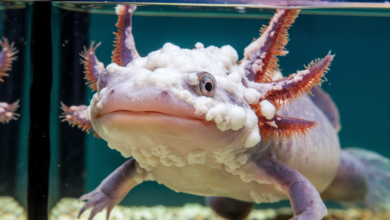
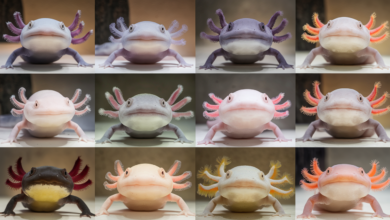
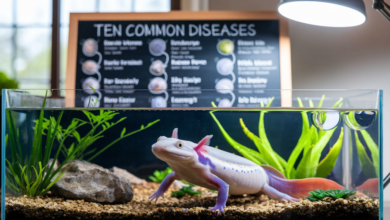
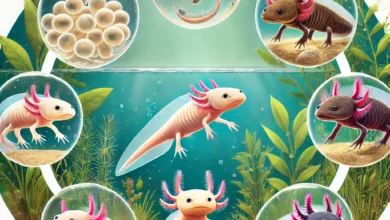
One Comment